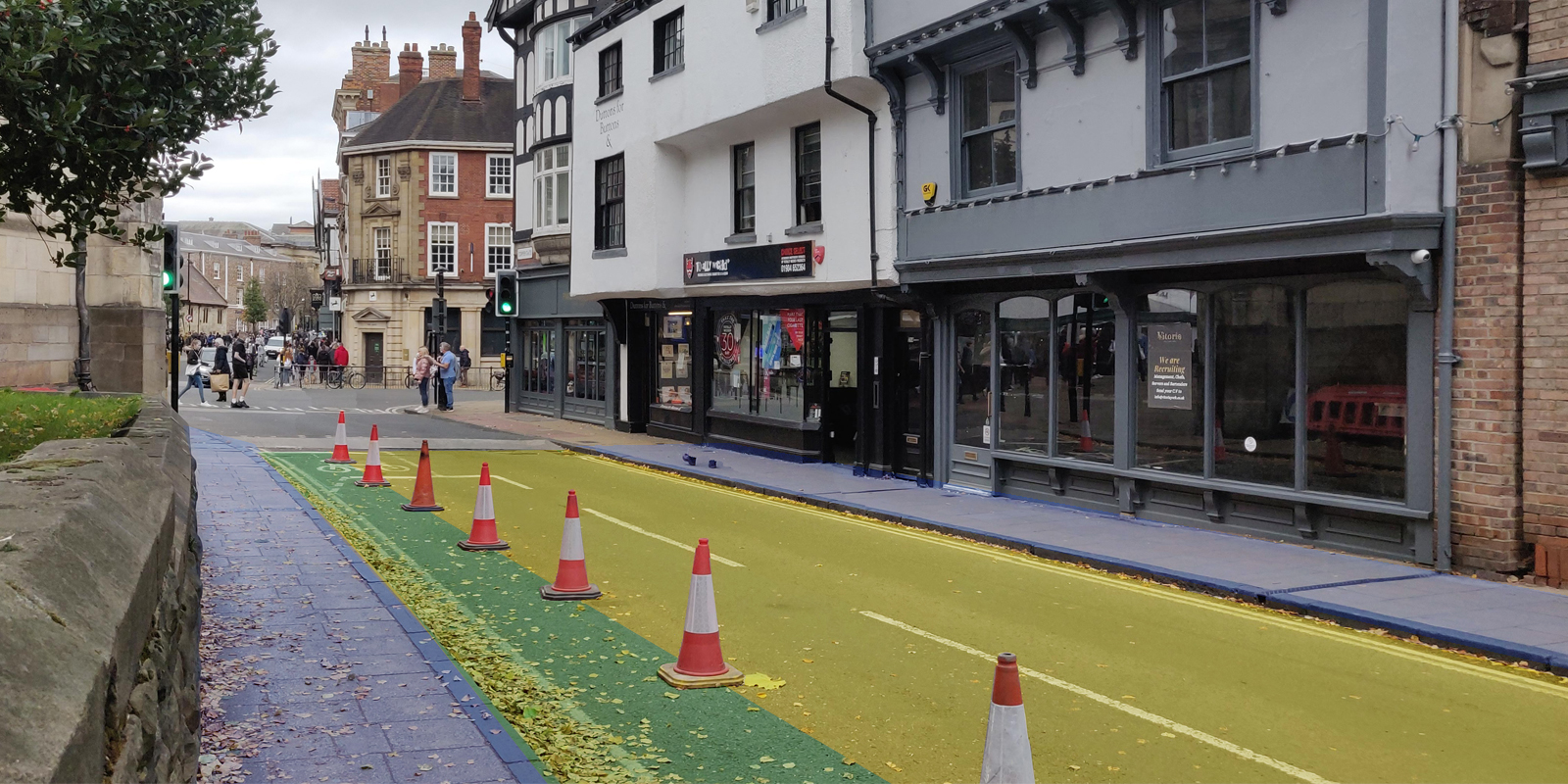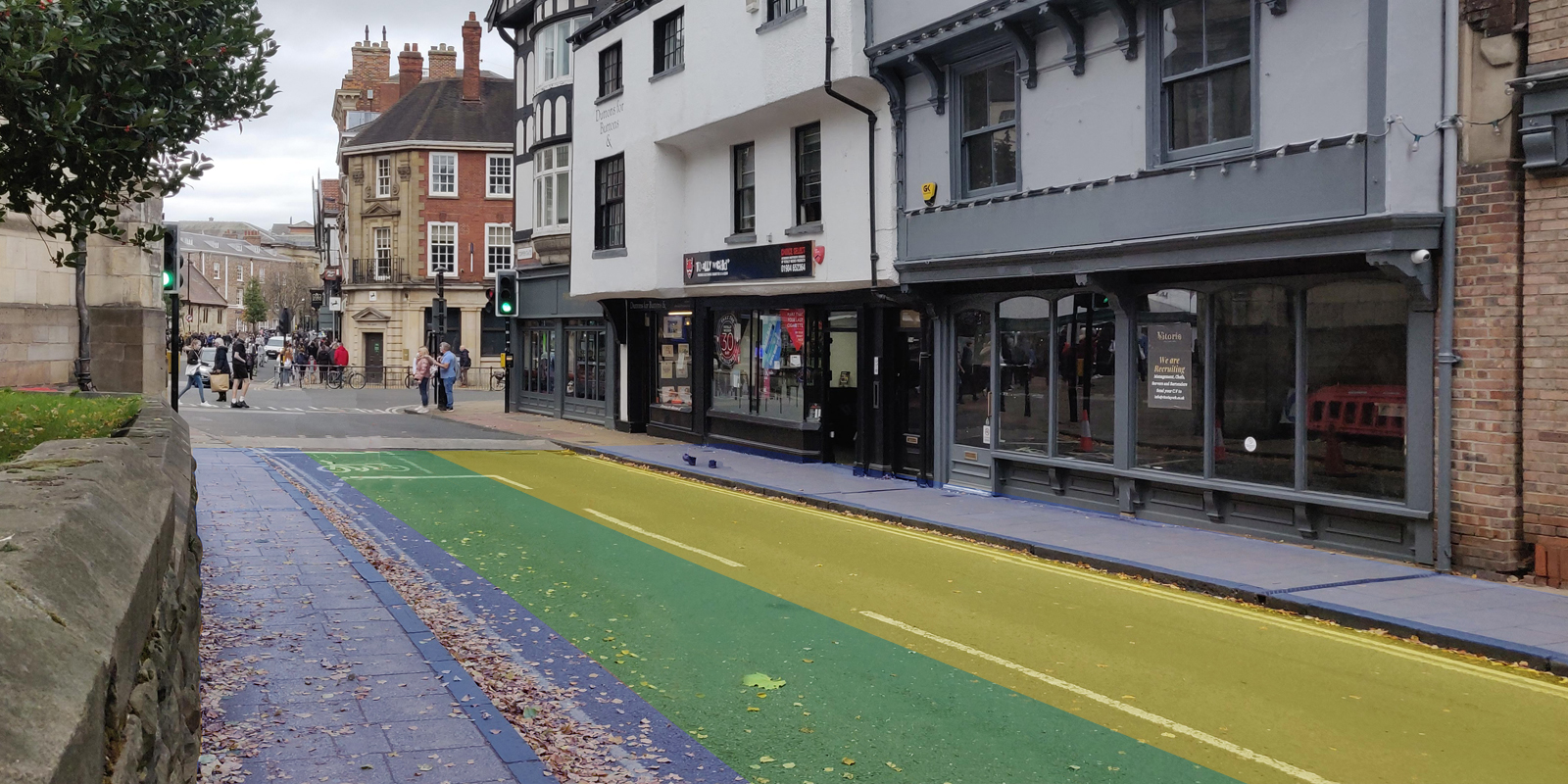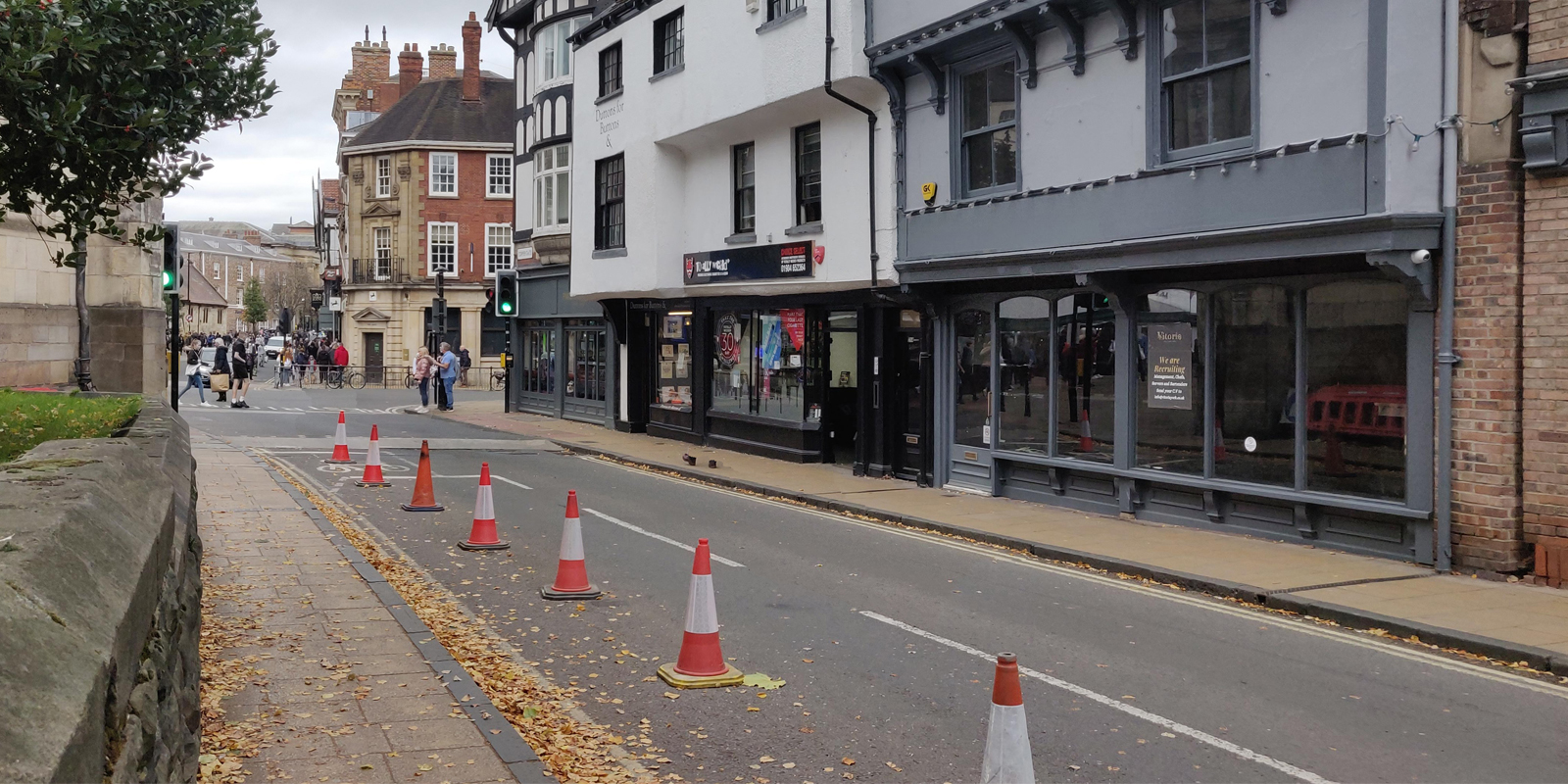As part of the response to the COVID-19 pandemic, the council introduced new restrictions to Coppergate in June 2020 in an attempt to increase available pavement space for pedestrians between Pavement Vaults and the Coppergate Centre using temporary barriers. As this restricted the width available the road was closed to east-bound motor traffic, as this was easiest to divert down Tower Street and back up Piccadilly.
As cyclists take up considerably less road space than motor traffic it wasn’t necessary to restrict their access, and any diversion via the inner ring road would have put cyclists in danger. As the temporary barriers pushed traffic into the centre of the road a series of light segation plastic wands were installed alongside All Saints Church.
The 18 month Temporary Traffic Order (TRO) that allowed the scheme comes to an end in December, but the council are currently consulting on whether parts of the changes should be retained.
The principles behind the scheme were admirable, space for pedestrians along Coppergate was in high demand and short supply long before the pandemic with the pavement on the church side measuring only 1.4m in width.
However, the execution of the trial fell short and didn’t meet expectations, providing the much needed space..
The temporary barriers that were meant to increase space for pedestrians were installed hard against the kerb meaning that no extra space was provided and instead pedestrians were hemmed in. These barriers eventually disappeared during summer 2021.
The wanded section alongside the church led to even more confusion leading to potentially dangerous situations. Many pedestrians, through no fault of their own, took the wands as being to increase the width of the narrow pavement as is needed and were using it as such. At best this caused frustration as cyclists met pedestrians coming the other way, at worst it saw pedestrians stepping into the road unaware that cyclists were coming up right behind them. The wands were also prone to damage/vandalism with the orange section being removed leaving behind a discrete black base bolted to the road posing a trip/collision hazard to pedestrians and cyclists. Recently all the wands have been removed and replaced by a row of cones.


The above image shows how the scheme has reallocated road space at the narrowest part of Coppergate outside the church. The pavements are 1.4m wide on the nearest side to the picture and 1.9m on the far side of the road. The eastbound cycle lane (highlighted green) was 1.1m wide when the wands were in place, but has been further reduced due to the width of the cones. The west bound traffic lane (highlighted yellow) is 4.7m. Before the scheme the road was equally split 2.9m in both directions.
DfT guidance LTN 1/20 states that a cycle lane, including those that are contraflows (where a cycle lane goes against a one-way street), should ideally be at least 2.0m wide. This is nearly double the width that was provided.
If the eastbound cycle lane was increased to 2.0m it would make the westbound lane 3.8m wide, but LTN 1/20 also states that traffic lanes of between 3.2-3.9m in width are not acceptable due to the increased risk of close passes. Instead it recommends that when on a bus route they should be 3.2m wide. Dropping the lane to this width would give 0.6m of spare space that can be re-allocated to the narrow footpath alongside the church.


If the road space of Coppergate was reallocated following the guidance in LTN 1/20 the original aim of increasing available width for pedestrians could be achieved – the need for which remains even though social distancing restrictions have been relaxed. It will also have the benefit of providing safer provision for cyclists travelling into and through the city centre.
The above image shows how a permanent solution with increased footpath width might look. The contraflow is clearly marked with regular cycle symbols, and potentially a green surface colouring, to avoid unintentional conflict between pedestrians and cyclists over misunderstanding of the space. An island at the entrance to the street is advised to highlight the contraflow to oncoming traffic, and set back the right distance from the junction would protect waiting cyclists from buses making the wide left turn from Piccadilly.
The council’s consultation acknowledges that the scheme has seen reduced vehicle levels in this area of the city centre and improved the environment for cyclists, but suggests that it has had the knock on effect of buses having to use stops of poorer quality by the former Banana Warehouse on Piccadilly. As the Piccadily is currently subject to a significant master planning exercise, which includes improvements to the Piccadilly stops, poor quality bus stops shouldn’t be seen as a barrier to improving the wider environment but as a driving force to ensure quality improvements to bus stops are made in a timely manner.
York Cycle Campaign believes that by relooking at the original aims of the temporary scheme designing to national guidance for cycling, a better solution can be found that brings real benefits for all users of Coppergate. We encourage all our members and supporters to take part in the consultation and call on the council to try a more ambitious plan for a better city centre.
The consultation closes on Thursday 4th November.


Leave a comment